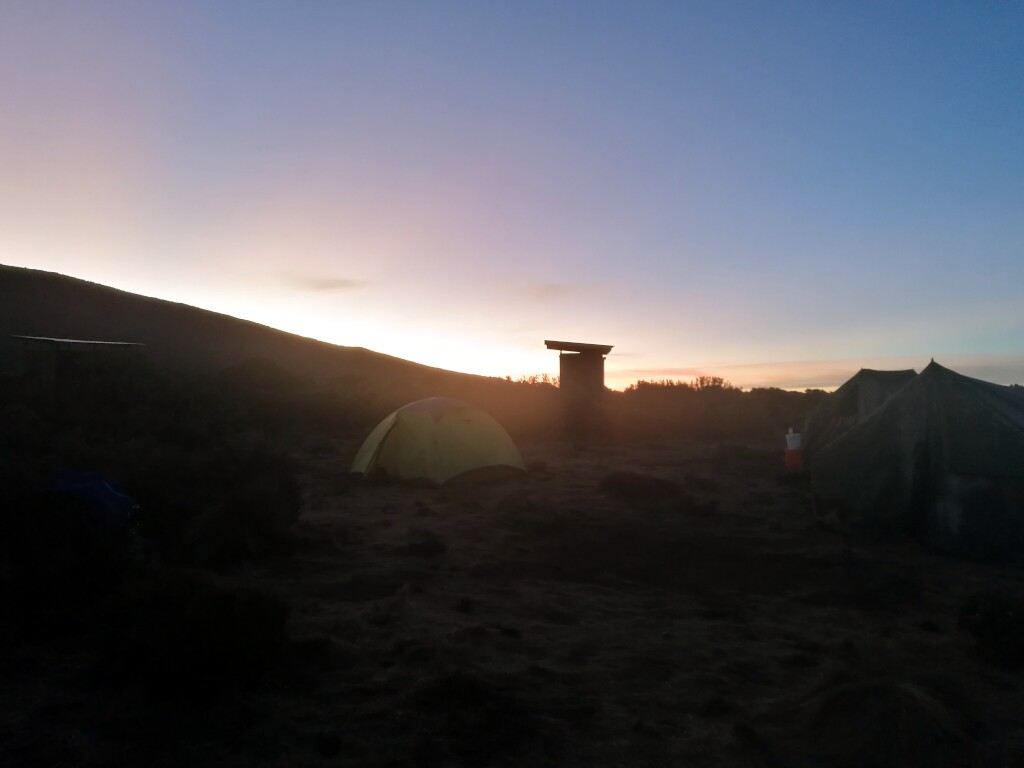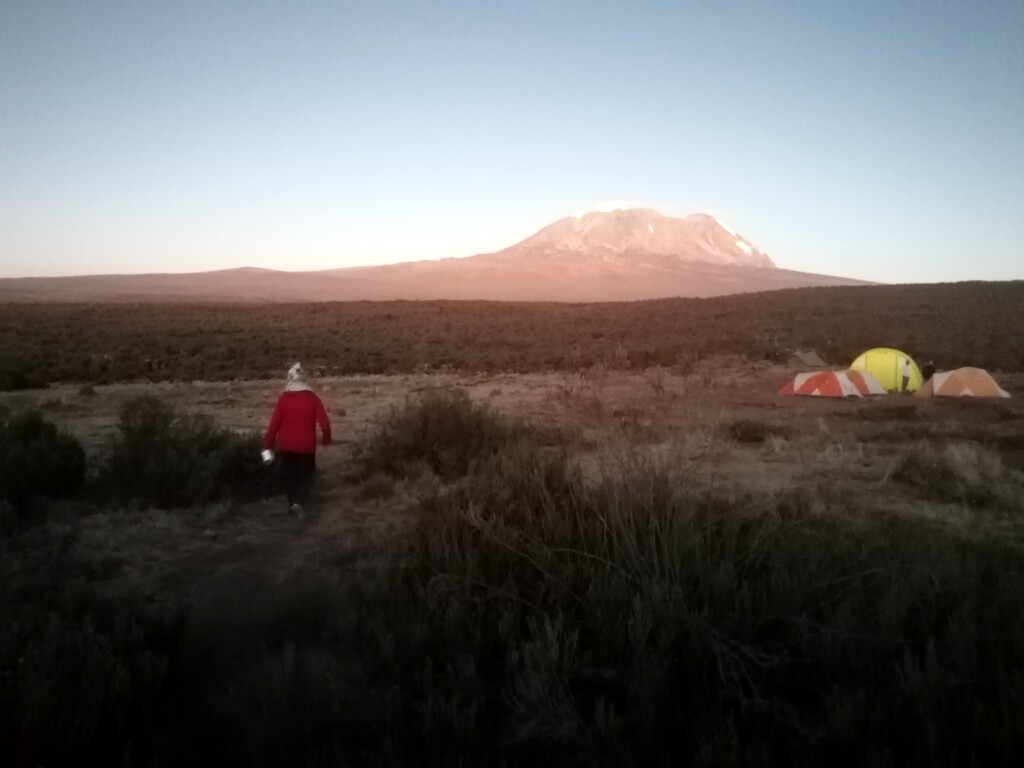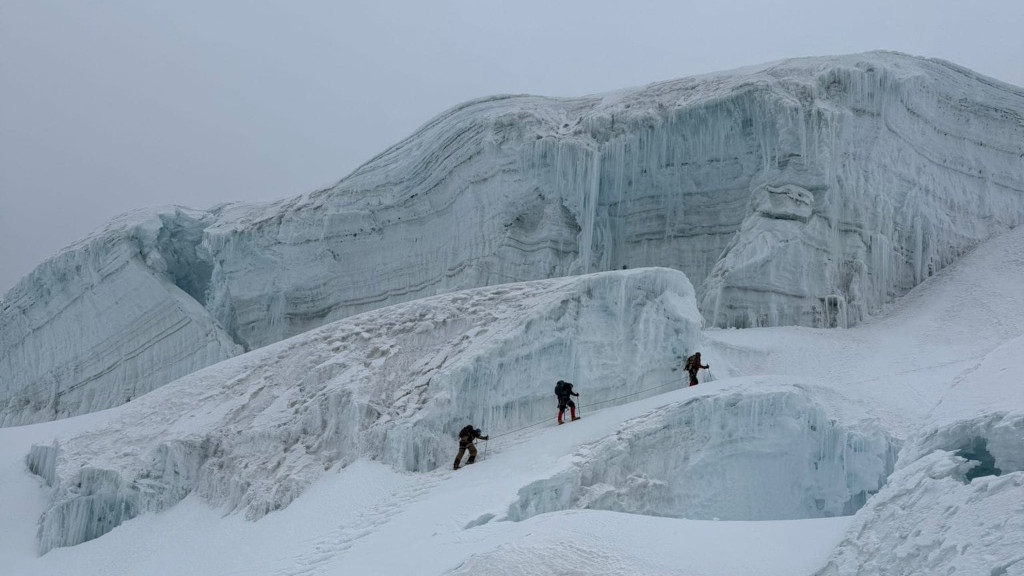
Higher and higher. This tour will take us to three 4000m peaks, two 5000m peaks and one 6000m peak in Ecuador's volcanic landscape.
More
 In the morning there was coffee at the tent and again a small bowl of water for the morning toilet. You need to know that every drop of water is
carried by the porters kilometres from a water source in the afternoon, usually in plastic canisters. And this after they have unloaded the
luggage and pitched the tents. Often they have to walk down the same mountain they just climbed. When our team, in the meantime 13 men, should
drink 3 litres of boiled water every day, that means two 20-litre canisters every day. But nothing is boiled or washed. When the glaciers on Kili
have thawed out in the next few decades, I don't know if the demand can be met only from rainwater, which would have to be brought from the
rainforest zone below 2800 metres. So they have to carry even more.
In the morning there was coffee at the tent and again a small bowl of water for the morning toilet. You need to know that every drop of water is
carried by the porters kilometres from a water source in the afternoon, usually in plastic canisters. And this after they have unloaded the
luggage and pitched the tents. Often they have to walk down the same mountain they just climbed. When our team, in the meantime 13 men, should
drink 3 litres of boiled water every day, that means two 20-litre canisters every day. But nothing is boiled or washed. When the glaciers on Kili
have thawed out in the next few decades, I don't know if the demand can be met only from rainwater, which would have to be brought from the
rainforest zone below 2800 metres. So they have to carry even more.
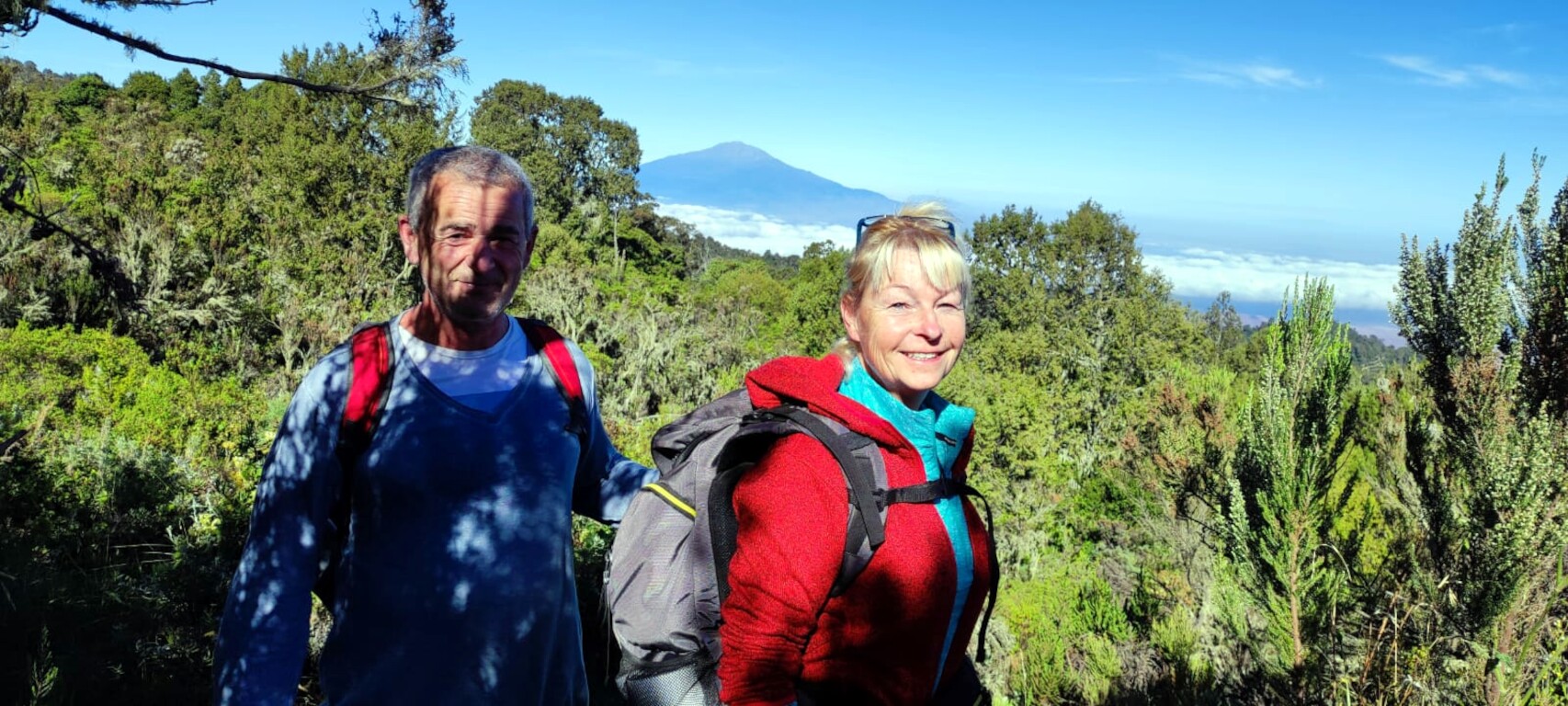 After a few hours uphill, we went out of the clouds, into the heath and moorland zone of the Shira Plateau. The sky was a bright blue and above the
white cloud cover, Mt Meru greeted us from afar. On dusty paths lined with low bushes, the trail led towards Shira Camp 1. Most of the time there
was a higher peak to overcome before reaching the destination camp: walk high, sleep low, that was important for adapting to the altitude.
Because we regularly had to go into the bushes due to the increased water and food intake, the guides explained new expressions to us to discreetly
announce this: Big business = need to send an email, small business = need to send a message 🙂. Arriving at the camp, we had the cone of
Kibo in front of us for the first time. It is the highest of the three extinct volcanoes of the Kilimanjaro massif with our destination Uhuru Peak.
After a few hours uphill, we went out of the clouds, into the heath and moorland zone of the Shira Plateau. The sky was a bright blue and above the
white cloud cover, Mt Meru greeted us from afar. On dusty paths lined with low bushes, the trail led towards Shira Camp 1. Most of the time there
was a higher peak to overcome before reaching the destination camp: walk high, sleep low, that was important for adapting to the altitude.
Because we regularly had to go into the bushes due to the increased water and food intake, the guides explained new expressions to us to discreetly
announce this: Big business = need to send an email, small business = need to send a message 🙂. Arriving at the camp, we had the cone of
Kibo in front of us for the first time. It is the highest of the three extinct volcanoes of the Kilimanjaro massif with our destination Uhuru Peak.
Clouds still covered the summit. Wait a few more hours, then the summit will be free, Richard said. He explained that every morning the clouds move up to the summit, in the late afternoon they dissipate again. Most tourists walk through to Shira Camp 2, but Richard said: "Every day at high altitude increases the likelihood of success". Besides, we still have an excursion tomorrow. We therefore arrived at the camp early, so there was a musical intermezzo from the team, presumably to invoke good luck for the tour and to keep everyone in good spirits. Richard had brought cards so that the porters also had fun after work and thought less about the hardship of their job or their distant families. I only wondered that they were playing skat, perhaps remnants of German colonial times? Anyway, in the afternoon the clouds on Kibo disappeared and the cone shone in a reddish light against a blue sky.
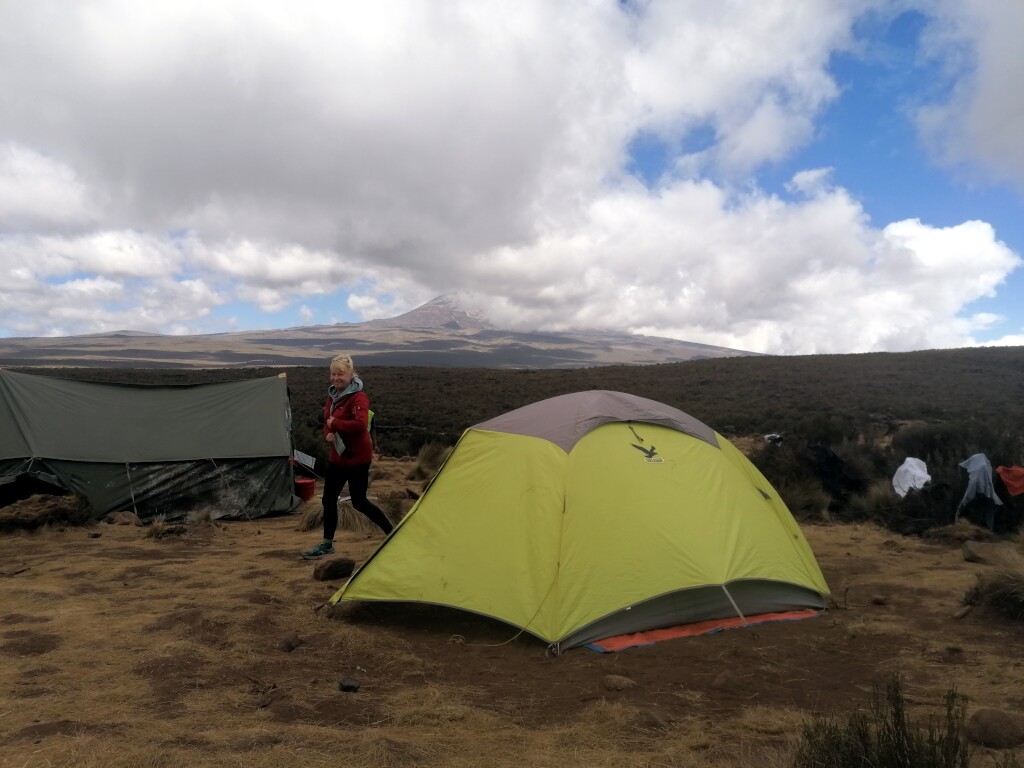 We walked a bit more through the bush landscape, not far from the camp was a gorge where the porters fetched water. But it quickly became cold,
tonight it was well below 0 degrees for the first time. We first had to find out how many layers of clothing we could sleep best with. So it was
another a restless night. But when I had to get out of the tent at night, as usual, above the dark outline of Kibo there was again this insanely
majestic and clear starry sky. Unfortunately, my simple camera can't take any photos.
We walked a bit more through the bush landscape, not far from the camp was a gorge where the porters fetched water. But it quickly became cold,
tonight it was well below 0 degrees for the first time. We first had to find out how many layers of clothing we could sleep best with. So it was
another a restless night. But when I had to get out of the tent at night, as usual, above the dark outline of Kibo there was again this insanely
majestic and clear starry sky. Unfortunately, my simple camera can't take any photos.

